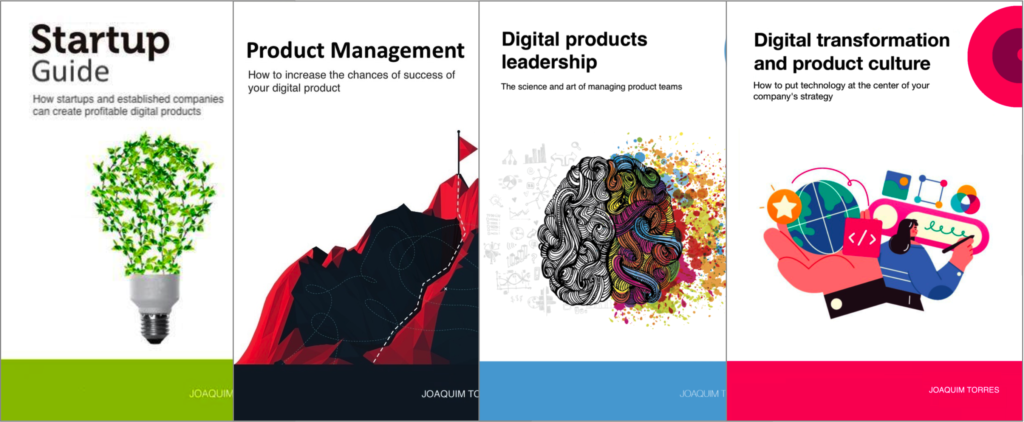Not every feature needs AI
30 de September, 2025Not Every Interface Needs to Be Conversational
14 de October, 2025This is the third article in the series I’ve been writing about AI and product management. Here are the previous ones:
-
AI is not just about productivity: I explain that AI is a technology that, beyond boosting productivity across all areas of a company, should also be considered when building intelligent products that help us solve customer problems while driving business results.
-
Not every feature needs AI: I explore the difference between deterministic and probabilistic solutions (the latter being AI-based). In some cases, deterministic solutions are more appropriate, while in others probabilistic ones are the better fit.
Today, we’ll discuss the difference between generative AI and analytical AI.
Analytical AI: The Veteran of AI
When we talk about AI, many people immediately think of generative tools like ChatGPT, DALL·E, or Midjourney. But analytical AI has been around for decades and powers digital products we use every day.
Analytical AI analyzes data to find patterns, make predictions, classify information, or recommend actions. It does not create new content. Instead, it interprets data and produces insights or outputs based on those patterns.
In the first article of this series, I shared the case of Lopes, Brazil’s largest real estate brokerage. Its “similar properties” recommendation feature is a great example of analytical AI: the algorithm observes user behavior and calculates the probability that other properties may also be relevant to someone browsing.
This AI doesn’t write text or generate images. It analyzes interactions and makes predictions. And as I showed in the numbers, it significantly improved both the customer experience and the company’s results.
Generative AI: The Content Creator
Generative AI, which rose to prominence in 2022–2023 with language models like GPT, is different. It creates something new, text, images, audio, video, or code, based on patterns learned during training.
In my experimental weekend project Zapando, built with vibe-coding tools, I combined both types of AI to create a goal- and task-management app.
Zapando uses analytical AI to:
- Detect the language of the user’s goal.
- Assess whether the goal is well-defined (for example, if it’s specific and has success criteria) and suggest adjustments.
And it uses generative AI to:
- Improve the wording of the goal with suggestions.
- Generate related tasks in the user’s own language.
The app is simple, yet it effectively illustrates the distinction. While the analytical part interprets and evaluates existing content, the generative part produces new content, including suggested tasks and improved goal descriptions. Watch the video to see how Zapando combines analytical and generative AI in practice.
When to Use Each Type
For product teams, the key is knowing when each type of AI makes sense:
- Analytical AI: when you need to detect patterns, predict outcomes, or recommend actions based on data — e.g., churn prediction, demand forecasting, fraud detection, or item ranking.
- Generative AI: when you need to create something new or personalized in real time — e.g., messages, images, videos, audio, reports, summaries, instructions, dynamic interfaces, or even code.
Many products, Zapando included, combine the two. What matters is avoiding the “generative AI hype”: not every problem needs AI to write or create something. Sometimes all that’s required is analyzing data and predicting patterns, which is often cheaper, more explainable, and easier to maintain.
Recognizing the difference between analytical and generative AI helps product teams choose the right tool for the problem at hand and better communicate their decisions to leadership and stakeholders.
The next article in this series will be titled: “Not Every Feature Needs a Conversational Interface.”
Workshops, coaching, and advisory services
I’ve been helping companies and their leaders (CPOs, heads of product, CTOs, CEOs, tech founders, and heads of digital transformation) bridge the gap between business and technology through workshops, coaching, and advisory services on product management and digital transformation.
Gyaco Podcasts
At Gyaco, we believe in the power of conversations to spark reflection and learning. That’s why we have three podcasts that explore the world of product management from different angles:
- Produto em Pauta: In the new season, titled “Beyond the Buzzwords”, Felipe Castro and I demystify product terms with real examples from our clients. Available on YouTube and Spotify. Recorded in Portuguese, with English subtitles on YouTube.
- Product Chronicles, the Brazilian Way: with Fábio Martinelli Duarte and Paulo Caroli — the Brazilian way of building products: stories, challenges, and lessons learned, featuring case studies from our clients. Available on YouTube and Spotify. Recorded in English, with Portuguese subtitles on YouTube.
- Beyond the Article, Expanded by AI: C.L.A.R.A. (Creative Language AI for Reflective Augmentation) chats with my AI clone, JocAI, expanding on my articles with new perspectives. Available on YouTube and Spotify. Thanks to AI, episodes are available in English, Spanish, and Portuguese.
Digital Product Management Books
Do you work with digital products? Do you want to know more about managing a digital product to increase its chances of success, solve its user’s problems, and achieve the company objectives? Check out my Digital Product Management books, where I share what I learned during my 30+ years of experience in creating and managing digital products:
- Digital transformation and product culture: How to put technology at the center of your company’s strategy
- Leading Product Development: The art and science of managing product teams
- Product Management: How to increase the chances of success of your digital product
- Startup Guide: How startups and established companies can create profitable digital products

